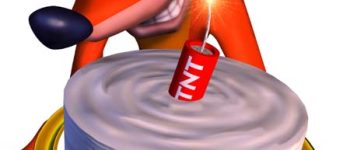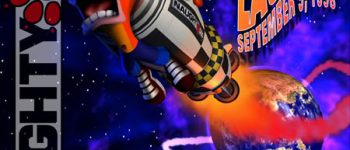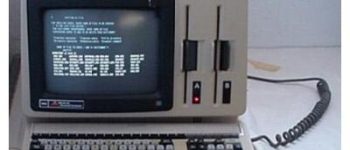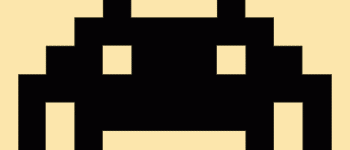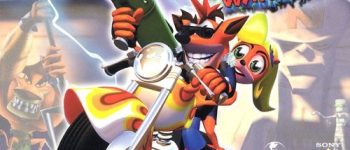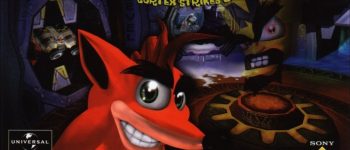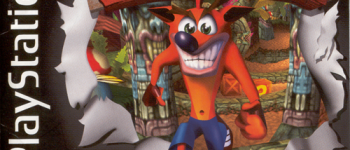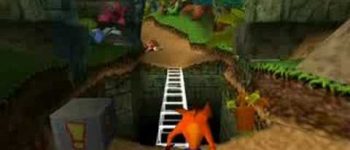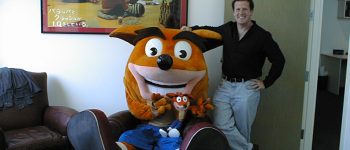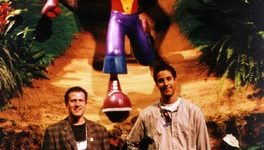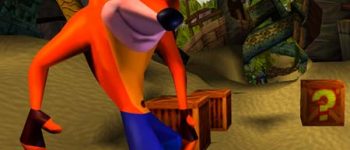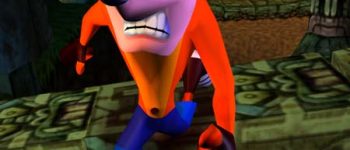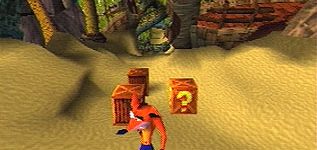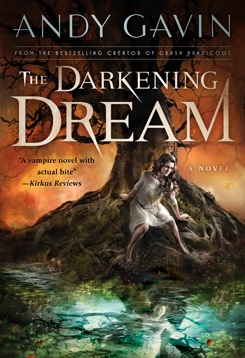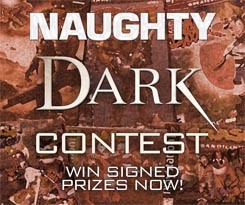In honor of the recent 15th Anniversary of my baby Crash Bandicoot, I present collected together the original suite of American TV Ads which premiered in September of 1996. It’s the suit that helped make the Bandicoot what he was. Thanks to…
- Writing
- Books
- Games
- Movies
- Television
- Food
- Food Review Index
- Foodie Club
- Hedonists
- LA Sushi Index
- Chinese Food Index
- LA Peking Duck Guide
- Eating Italy
- Eating France
- Eating Spain
- Eating Türkiye
- Eating Dutch
- Eating Croatia
- Eating Vietnam
- Eating Australia
- Eating Israel
- Ultimate Pizza
- ThanksGavin
- Margarita Mix
- Foodie Photography
- Burgundy Vintage Chart
- Other
- Gallery
- Bio
- About
- Contact
This post is presents an algorithm of sorts for learning to program. It applies not only to the fundamentals, but to all aspects, including the acquisition of small component skills. Thirty years after learning, I still follow the same basic procedure. To tell the truth, modified, it works for leaning most things.
In honor of Crash’s 15th Anniversary I wanted to make a post whose primary purpose is to serve as a repository for comments from you — the fans — about your first and favorite Crash Bandicoot impressions. Please make them…
There are two basic approaches: home training and school. Personally I’d recommend both.
Let’s talk school. In my day (1980s) pre-collegiate computer classes barely existed, and if they did they were mostly about Pascal programming and data-structures. They often used p-System pascal, an old-school predecessor to Java!
Some kid is always asking me, “I love video games, how do I learn to program them?”
First of all, a warning. Reaching the skill level to be a professional video games programmer takes years. There are no shortcuts. You can not possibly go from nothing to professional grade skills in less than perhaps 2-3 years — and for that you’d have to be an uber-genius — usually it takes 5-10.
This post is a sequel of sorts to my How do I get a job designing video games. The good new is — if you’re a programmer — that nearly all video game companies are hiring programmers at all times. Demand is never…
There are a couple of broad categories of programmers working on video game teams. If programmer is your player class, then the following types are your spec. Programmers are all warlocks and mages so instead of “demonology” or “frost” you can choose from below. This is the real world however, and many programmers dual (or even triple) spec — i.e. they handle multiple specialties.
Old Crash 20 Questions
This is an old Crash Bandicoot 20 questions that used to be on Naughty Dog‘s site a long time ago. I’ve gotten a lot of messages looking for them, so I dug them up, but I haven’t done any editing…
These are answers (of mine) to a series of interview questions from Russian game site www.crash–bandicoot.ru. They’re a major Russian Crash fan site, hence the bad pun in my title. If you happen to speak Russian, they’ve it here. The questions…
This new addition to the field of video game histories is a whirlwind tour of the medium from the 70s blips and blobs to the Facebook games of today, with everything in the middle included. Goldberg has wisely chosen to snapshot pivotal stories. He seizes on some of the most important games, and even more importantly, the zany cast of creatives who made them.
Part 3 of a journal article I wrote on making Crash in 1999.
Part 2 of a detailed journal article I wrote on making Crash in 1999.
Below is another journal article I wrote on making Crash in 1999. This was co-written with Naughty Dog uber-programmer Stephen White, who was my co-lead on Crash 2, Crash 3, Jak & Daxter, and Jak 2. It’s long, so I’m breaking it into three parts.
I’m always being asked for more information on the LISP based languages I designed for the Crash and Jak games. This post is about GOOL, the LISP language used in Crash 1, Crash 2, and Crash 3. GOOL was my second custom language. GOOL was mostly interpreted, although by Crash 2 basic expressions were compiled into machine code.
After Naughty Dog Jason and I joined forces with another game industry veteran, Jason Kay (collectively Jason R & K are known as “the Jasons”). He was at Activision at the time of the Crash launch and offers his outside perspective.
Dave Baggett, Naughty Dog employee #1 (after Jason and I) throws his own thoughts on Crash Bandicoot into the ring.
Not only did we need to finish our E3 demo, but we needed a real name for the game — Willie the Wombat wasn’t going to cut it. Now, in the Naughty Dog office proper we knew he was a Bandicoot. In fact, we liked the idea of using an action name for him, like Crash, Dash, Smash, and Bash — fallout from the visceral reaction to smashing so many boxes.
But once the core gameplay worked, these cool levels were missing something. We’d spent so many polygons on our detailed backgrounds and “realistic” cartoon characters that the enemies weren’t that dense, so everything felt a bit empty.
We were forging new gameplay ground, causing a lot of growing pains. The control of the main character is the single most important thing in a CAG. I did all the programming, but Mark helped whip me along. For example saying, “he doesn’t stop fast enough,” or “he needs to be able to jump for a frame or two AFTER he’s run off a cliff or it will be frustrating.” Criticism is essential, and as a programmer who wrote dozens of world class control schemes in the years between 1994 and 2004, I rewrote every one at least five or six times. Iteration is king.
While all this art design was going on, I, and then in January 1995, Dave, struggled to build an engine and tool pipeline that would make it possible to render these grandiose cartoon worlds we had envisioned on paper. Since during fall of 1994 Jason was also the only artist, he frantically generated all the source material and banged on my head to make sure it would look incredible.
Subscribe by email:
Categories
- Contests (7)
- Fiction (404)
- Books (113)
- Movies (77)
- Television (123)
- Writing (115)
- Darkening Dream (62)
- Untimed (37)
- Food (1,856)
- Games (103)
- History (13)
- Technology (21)
- Uncategorized (16)
Archives
- December 2025 (6)
- November 2025 (13)
- October 2025 (12)
- September 2025 (14)
- August 2025 (15)
- July 2025 (16)
- June 2025 (14)
- May 2025 (7)
- April 2025 (4)
- February 2025 (5)
- January 2025 (3)
- December 2024 (13)
- November 2024 (14)
- October 2024 (14)
- September 2024 (15)
- August 2024 (13)
- July 2024 (15)
- June 2024 (14)
- May 2024 (15)
- April 2024 (13)
- March 2024 (9)
- February 2024 (7)
- January 2024 (9)
- December 2023 (8)
- November 2023 (14)
- October 2023 (13)
- September 2023 (9)
- August 2023 (15)
- July 2023 (13)
- June 2023 (14)
- May 2023 (15)
- April 2023 (14)
- March 2023 (12)
- February 2023 (11)
- January 2023 (14)
- December 2022 (11)
- November 2022 (13)
- October 2022 (14)
- September 2022 (14)
- August 2022 (12)
- July 2022 (9)
- June 2022 (6)
- May 2022 (8)
- April 2022 (5)
- March 2022 (4)
- February 2022 (2)
- January 2022 (8)
- December 2021 (6)
- November 2021 (6)
- October 2021 (8)
- September 2021 (4)
- August 2021 (5)
- July 2021 (2)
- June 2021 (3)
- January 2021 (1)
- December 2020 (1)
- September 2020 (1)
- August 2020 (1)
- April 2020 (11)
- March 2020 (15)
- February 2020 (13)
- January 2020 (14)
- December 2019 (13)
- November 2019 (12)
- October 2019 (14)
- September 2019 (14)
- August 2019 (13)
- July 2019 (13)
- June 2019 (14)
- May 2019 (13)
- April 2019 (10)
- March 2019 (10)
- February 2019 (11)
- January 2019 (13)
- December 2018 (14)
- November 2018 (11)
- October 2018 (15)
- September 2018 (15)
- August 2018 (15)
- July 2018 (11)
- June 2018 (14)
- May 2018 (13)
- April 2018 (13)
- March 2018 (17)
- February 2018 (12)
- January 2018 (15)
- December 2017 (15)
- November 2017 (13)
- October 2017 (16)
- September 2017 (16)
- August 2017 (16)
- July 2017 (11)
- June 2017 (13)
- May 2017 (6)
- March 2017 (3)
- February 2017 (4)
- January 2017 (7)
- December 2016 (14)
- November 2016 (11)
- October 2016 (11)
- September 2016 (12)
- August 2016 (15)
- July 2016 (13)
- June 2016 (13)
- May 2016 (13)
- April 2016 (12)
- March 2016 (13)
- February 2016 (12)
- January 2016 (13)
- December 2015 (14)
- November 2015 (14)
- October 2015 (13)
- September 2015 (13)
- August 2015 (18)
- July 2015 (16)
- June 2015 (13)
- May 2015 (13)
- April 2015 (14)
- March 2015 (15)
- February 2015 (13)
- January 2015 (13)
- December 2014 (14)
- November 2014 (13)
- October 2014 (13)
- September 2014 (12)
- August 2014 (15)
- July 2014 (13)
- June 2014 (13)
- May 2014 (14)
- April 2014 (14)
- March 2014 (10)
- February 2014 (11)
- January 2014 (13)
- December 2013 (14)
- November 2013 (13)
- October 2013 (14)
- September 2013 (12)
- August 2013 (14)
- July 2013 (10)
- June 2013 (14)
- May 2013 (14)
- April 2013 (14)
- March 2013 (15)
- February 2013 (14)
- January 2013 (13)
- December 2012 (14)
- November 2012 (16)
- October 2012 (13)
- September 2012 (14)
- August 2012 (16)
- July 2012 (12)
- June 2012 (16)
- May 2012 (21)
- April 2012 (18)
- March 2012 (20)
- February 2012 (23)
- January 2012 (31)
- December 2011 (35)
- November 2011 (33)
- October 2011 (32)
- September 2011 (29)
- August 2011 (35)
- July 2011 (33)
- June 2011 (25)
- May 2011 (31)
- April 2011 (30)
- March 2011 (34)
- February 2011 (31)
- January 2011 (33)
- December 2010 (33)
- November 2010 (39)
- October 2010 (26)
Copyright © 2025 All Rights Reserved

